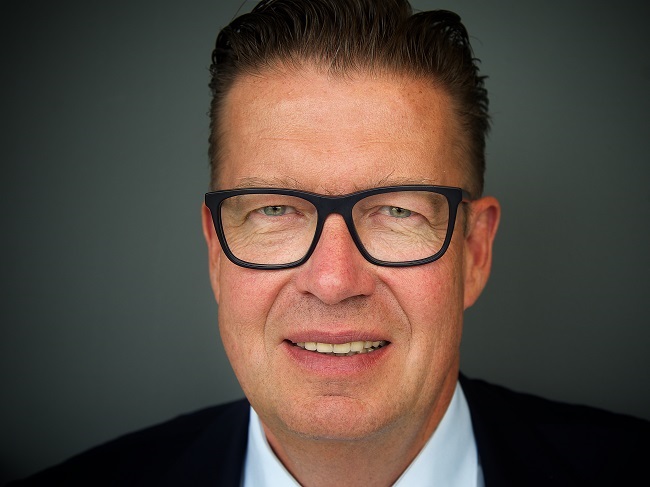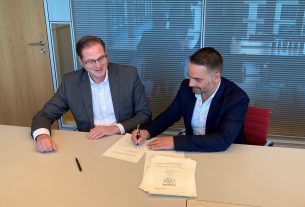Germany – We should not be surprised when Covestro will be eventually a major recycler as well as a chemicals producer. Waste plastic, biomass and CO will become the new raw materials for the chemical industry. And “Dead Dog” CO2 will also be reanimated.
A few years ago, Covestro caused a sensation with the use of CO2 as a raw material. In Dormagen, Germany, the chemical company succeeded in replacing twenty per cent of the oil-based feedstock with carbon dioxide to produce raw materials for polyurethane foam. An ultimate form of recycling, so it seems.
Expectations
Nevertheless, chief technology officer Klaus Schäfer tempered the enthusiasm somewhat in an earlier interview. As befits a technician. The situation in Dormagen is exceptional. There is a great deal of pure CO2 available and, above all, an abundance of energy from an exothermic process in an adjacent factory. “CO2 is a dead dog,” Schäfer said back then. An enormous amount of energy is needed to bring it back to life, to turn it into a chemical building block or fuel. And then this also has to be done with the right catalyst. According to the CTO of Covestro, we should not have exaggerated expectations that the recycling of CO2 will take off very quickly on an industrial scale.
Easier building block
Nevertheless, there are new opportunities. For example, when it comes to using flue gases from the steel industry. Together with ArcelorMittal and various other partners, including knowledge institutes, Covestro is investigating the possibilities of converting carbon monoxide (CO) and carbon dioxide into chemical building blocks. An interim report recently showed that the possibilities are promising. Especially for regions where chemical industry and steel industry are close together.
Another striking conclusion is that a mixture of CO, CO2 and hydrogen yields the best results. Schäfer, who had described CO as a “living puppy” in the earlier interview, sees it as a nice mixture. Carbon monoxide has a much higher energy level than carbon dioxide and is therefore a much easier chemical building block to process. ‘I know chemists would describe it differently, but you could say that CO2 borrows energy from CO.’
CCS
It seems that German chemical companies are more focusing on the reuse of CO2 than on underground storage, as will happen in gas fields off the Dutch coast. Schäfer is aware that the situation largely dictates the solutions. He is therefore less critical of the CCS plans of the ports of Rotterdam and Antwerp, for example. ‘In Germany, there are just fewer possibilities, so we have to look for other solutions’, says Schäfer.
Life cycle
Reusing CO2 is one of the paths Covestro wants to take to become fully circular. This ambition was expressed by top executive Markus Steilemann last year. The chemical group plans to convert its production facilities worldwide to alternative raw materials, such as biomass, but also plastic waste and renewable energy in particular. Ultimately, Covestro will become an innovative recycler in addition to being a producer of chemicals. The products must also be increasingly prepared for subsequent recycling.
Chemical recycling is an important spearhead here. In this process, waste plastics are broken down again into smaller chemical molecules. These serve as raw materials for existing chemical processes. In contrast to mechanical recycling, in which the chemical structure of the polymers is preserved, chemical recycling is still in its infancy.
But it is an important step towards the mass recycling of plastics, Schäfer states. In mechanical recycling, the polymer structure of plastics breaks down after a number of times. In addition, several plastics are simply not recyclable. The advantage of chemical recycling is that you bring plastics back to the original molecule or intermediate, that you can then use as a drop-in solution in the production process. This way the life cycle of these products can start over and over again.
Block chain
The circular ambitions of Covestro still require many innovations, and not only in the field of chemical process technology and, for example, catalysts. New ICT solutions can also make a contribution. For example, Covestro is closely involved with the Dutch company Circularise. This company has developed a method based on blockchain to trace the origin of materials. At the same time, the privacy and confidentiality of data are guaranteed. In this way, every producer and consumer can check the origin of the materials.
Antwerp site
In addition to alternative raw materials such as discarded materials, CO2 and biomass, renewable energy is also necessary to achieve a truly circular economy. Covestro will therefore gradually switch its production to this. In a first step, the company sources 45% of its electricity needs for the Antwerp site from wind energy supplied by the Belgian part of energy company Engie. From 2025 onwards, the company will also source a significant proportion of its electricity for its factories in Germany from a wind farm in the North Sea being built by Danish energy supplier Ørsted.





